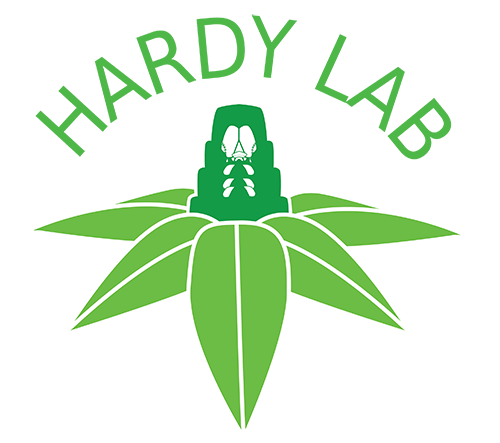Valid Names Results
Pelionella glandulifer (Borchsenius, 1949) (Pseudococcidae: Pelionella)Nomenclatural History
- Peliococcus glandulifer Borchsenius 1949: 259. Type data: AZERBAIJAN: Ordubat and ARMENIA: Erevan, on Euphorbia sp.. Lectotype, female, by subsequent designation (Danzig2001,133). Type depository: St. Petersburg: Zoological Museum, Academy of Science, Russia; accepted valid name
- Erimococcus glandulifer (Borchsenius, 1949); Tang 1992: 517. change of combination
- Peliococcus glanduliferus Borchsenius, 1949; Kaydan 2014: 205. misspelling of species epithet
- Erimococcus glandulifer (Borchsenius, 1949); Danzig & Gavrilov-Zimin 2014: 359. revived combination (previously published)
- Pelionella glandulifer (Borchsenius, 1949); Kaydan 2015: 227. change of combination
Common Names
Ecological Associates
Hosts:
Families: 1 | Genera: 1
- Euphorbiaceae
- Euphorbia | BenDov1994 Borchs1949 TerGri1973
- Euphorbia seguieriana | Kaydan2015
Geographic Distribution
Countries: 3
- Armenia | BenDov1994 Borchs1949 TerGri1973
- Azerbaijan | BenDov1994 Borchs1949
- Turkey | Kaydan2015
Keys
- Tanaka2018a: pp.56-57 ( Adult (F) ) [Pelionella]
- DanzigGa2014: pp.388-389 ( Adult (F) ) [Palearctic Erimococcus species] Key as: Erimococcus glandulifer
- Danzig2001: pp.124-125 ( Adult (F) ) [Palaearctic region]
- Tang1992: pp.513 ( Adult (F) ) [China]
- TerGri1973: pp.177 ( Adult (F) ) [Armenia]
- Borchs1949: pp.244 ( Adult (F) ) [Palaearctic region]
Remarks
- Systematics: Danzig & Gavrilov-Zimin (2014) regarded Peliococcus glandulifer Borchsenius as Erimococcus glandulifer. However, according to DNA analysis, P. glandulifer falls into the Pelionella clade and also this species has different kinds of multilocular disc pores on the dorsum and venter and therefore differ from other species of Erimococcus. (Kaydan, 2015)
- Biology: Living on roots of its host plant.
- General Remarks: Good description and illustration given by Ter-Grigorian (1973) and by Danzig (2001). Good description and illustration of the female third-instar nymph given by Ter-Grigorian (1973). Good description of the adult female given by Borchsenius (1949) and by Tang (1992).
Illustrations
Citations
- BenDov1994: catalog, 293
- Borchs1949: description, distribution, host, taxonomy, 259-260
- ChoiLe2022: phylogeny, 358
- Danzig2001: description, distribution, host, illustration, taxonomy, 133, 134
- DanzigGa2014: taxonomy, 389-390
- Kaydan2015: description, distribution, host, molecular data, phylogenetics, taxonomy, 205, 209-210
- Tanaka2018a: key, 56-57
- Tang1992: description, distribution, host, taxonomy, 517-518
- TerGri1973: description, distribution, host, illustration, taxonomy, 193-195


